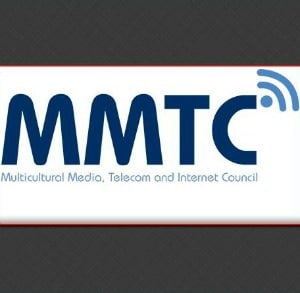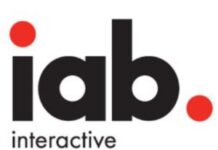
In 2015, four of the ten highest billing radio stations in America were on the AM band totaling approximately $167 million. For sure there are many others across the country not doing well. AM broadcasters have been asking the FCC for technical help, for what seems like a decade, as the digital world of crisp clean listening picks listeners off year after year. This with the MMTC sent a letter to the Trump administration asking the new government to decommission the AM band. We turned to broadcast attorney John Garziglia to get his opinion on that plan. Here’s what he had to say and check out the comments we received on our story yesterday
By John Garziglia
One of the funniest things I ever read about AM radio was from a trade publication spoof distributed at the 1988 Washington, DC NAB radio convention titled “Outside Radio” which, as its lead article, declared:
NAB DEDICATES MONUMENT TO AM RADIO TO OPEN CONVENTION. Dubbed “The AM Memorial”, monument is actually a hole in the ground as deep as the nearby Washington Monument is tall. Passersby will be invited to throw money into it so they can watch it disappear, giving them the exact feeling of owning an AM station. Later in the spoof publication’s Radio Glossary there was the definition: “AM: (n) Almost Moribund”.
Now, some 28 years later, the MMTC is asking in a letter to President-Elect Trump that the AM band be decommissioned.
There is no question but that there will be a multitude of AM stations facing failure in the next several years. Times change – radio listeners are no longer willing to schedule their listening for daytime only, and AM band noise levels have reached extraordinary levels.
But, the MMTC “ask” for the FCC to “Create a ‘Glide Path’ for the Short-Term Survival and Long-Term Humane Decommissioning of the AM Band in a Manner that Preserves Minority Ownership” is both misguided in its AM broadcasting prognosis, and also tone-deaf as identity politics is expected to play a lesser role in governmental policy with the change in administrations that is about to occur.
MMTC asks the FCC to “start thinking about a future without AM radio”, and assistance for AM station owners to transition “to other platforms such as FM subchannels and online stations.” MMTC also asks for “ownership structure rule relaxation for the limited purpose of ensuring that [AM] station sellers will find buyers, and compensation or tax incentives for turning in an AM license.” It is unclear from its proposal how a “future without AM radio” comports with “find[ing] buyers”.
MMTC advocates that the FCC “identify potential uses of the low-band spectrum now assigned to AM, such as maritime mobile, aeronautical fixed, and aeronautical mobile, as well as exploring new potential classes of users such as drones, driverless vehicles, rural irrigation, and the Internet of Things (IOT).” Unfortunately, if what is now the AM band spectrum could be advantageously used for any of these applications, that is news. MMTC does not cite any support for the proposition that the AM band might be used for any of these alternate purposes.
Rather, the future of the AM band, while challenging, is certainly not impossible. AM radio continues to be the one non-subscription consumer radio service that can reach the vast rural areas of our country, both with the tremendous groundwave coverage enjoyed by our higher power stations, and the nighttime skywave coverage from clear channel stations.
All-digital HD AM has a tremendous potential to resurrect reception quality for those AM stations that enjoy a robust consistent day and night coverage. The hope is that, at some point in the next five years, HD radio penetration into automobiles will reach a tipping point where a significant number of potential radio listeners will have HD AM radio receivers. At that point, an AM station that is also carried on an FM translator may be able to transition to all-digital transmission without abandoning at least a portion of its non-HD radio audience.
MMTC is right in observing what our industry has known since well before the 1988 Outside Radio spoof was published – AM radio station ownership is a challenge and will remain so for the foreseeable future. If other more profitable uses can be identified for the AM band spectrum, then bring it on. If congestion and interference reduction on the AM band can be accomplished by regulatory measures such as encouraging the turning-in of marginal AM station licenses, then let’s explore that. And even though solving the increasing harmful AM band ambient noise level issue carries with it a difficulty akin to tackling global climate change, if there is a way to reduce AM band interference, then by all means let’s push the FCC to pursue it.
For now, however, significant players in our industry such as MMTC proclaiming the death of AM by positing contrived solutions for “when the AM band disappears” is an undeserved obituary for the many AM broadcasters who continue to operate successful radio stations in our senior band.
 John F. Garziglia is a Communications Law Attorney with Womble Carlyle Sandridge & Rice in Washington, DC and can be reached at (202) 857-4455. or [email protected]
John F. Garziglia is a Communications Law Attorney with Womble Carlyle Sandridge & Rice in Washington, DC and can be reached at (202) 857-4455. or [email protected]






This debate will go on forever, seems like. When we first realized the benefits of FM over AM (back in the 60s), it was clear. AM was in trouble then. It took a few more decades, but it seems that part of the problem showed when the receivers started limiting AM audio bandwidth. Then NRSC limited the AM transmission bandwidth. If that was an attempt to show the clarity difference between the two bands, it was a great plan. The subsequent addition of a number of interference causing devices (lights, computers, cable boxes, etc.) only amplified the issues. The digital attempts in making AM viable again only exacerbated the noise issue. Most AM stations near us have turned that second (much lower powered) transmitter off. People increasingly reported the painful experience of hearing their station switch from digital to analog when they were 10 miles from the transmitter. We’re 100 miles from the heart of the 2nd largest market in the country. It’s tough to find enough usable signals to fill in the six presets on my car. FM on the other hand has a signal overload. Those of us who’ve been around for decades know that AM can be an awesome medium with extended reach and exceptional quality. It doesn’t seem like we’ll ever be able to go back to those days though. Fix the receivers, minimize the interference and utilize today’s technology to fix the analog transmission issues. Then it might take another decade for attrition to replace the huge numbers of crappy AM receivers. Broadcasters need to work on the content as well. Consolidation has eliminated a lot of competition -and that needs to come back. It can only benefit the CONSUMER. A shopping mall with 100 viable businesses will do much better than the one with 25 viable and 75 “niche” stores.
A lot of dreams here. . most, sadly, can never come true.
AM radio is in transition. Reminding us that 4 of the top ten radio billing stations are AM stations is a hard, cold fact. Advertisers expect an ROI. The advertisers who use those 4 city stations are seeing results.
Rush Limbaugh brought on a new surge of energy to AM stations in 1988 as the News/Talk model took hold. It will take something other than music-some sort of specialty programming to spur another renaissance. Many small town AMS are doing well with an abundance of talk, swap shops, shopping shows, local sports and other specialty programming that could show the way for all AMs.
FM, at one time, was in a similar transition from it’s ‘Beautiful Music” origins to the mass appeal music formats it enjoys today. There was a time when no advertisers were buying FM and a similar “abort FM” movement might have found supporters. Too much going for AM to do that now.
I am a chief operator of 2 AM transmitters and 1 FM transmitter.
One problem facing AM band that was personally discovered many years ago… is the AM hash generated by cable television transmission lines.
Due to a listener complaint in a near by town of one AM station; being noise and loss of reception, 16 statute miles from the AM transmitter. Along with a broadcast engineer, we set out to understand why a 5kw signal was being knocked down so close to the transmitter. What we discovered was the AM signal being covered by RF noise generated from the cable vision lines, tap points and “boxes” up and down the line.
The broadcast engineer researched if there was any action could be filed with the FCC, and found there was no regulation of AM RF generation from cable vision lines. This event occurred some 12+ years ago, and regulations may have since been put in place, but I do not believe so.
For the AM band to not only survive but prosper: Those “other technologies” that pollute the AM band, must be regulated and corrected.